The most beautiful parks of Podgorica can be found downtown, i.e. in the city center, along the Morača and Ribnica rivers. This neighborhood is historically known as Nova Varoš („New Town“) and its centers on the large, tree-lined Independence Square (Trg nezavisnosti).
In this district you can find the Parliament, the Central Bank, the Presidential Building, the National Theatre and the Town Hall. It is also home to a series of lively pubs and restaurants, located in the pedestrian zones of Bokeška, Hercegovačka and Njegoševa streets.
From the architectural point of view, this district is a mix of old – and partly renovated – houses and typical buildings constructed in the era of Tito’s Yugoslavia, filling in the vacant plots that remained after the World War II devastation.
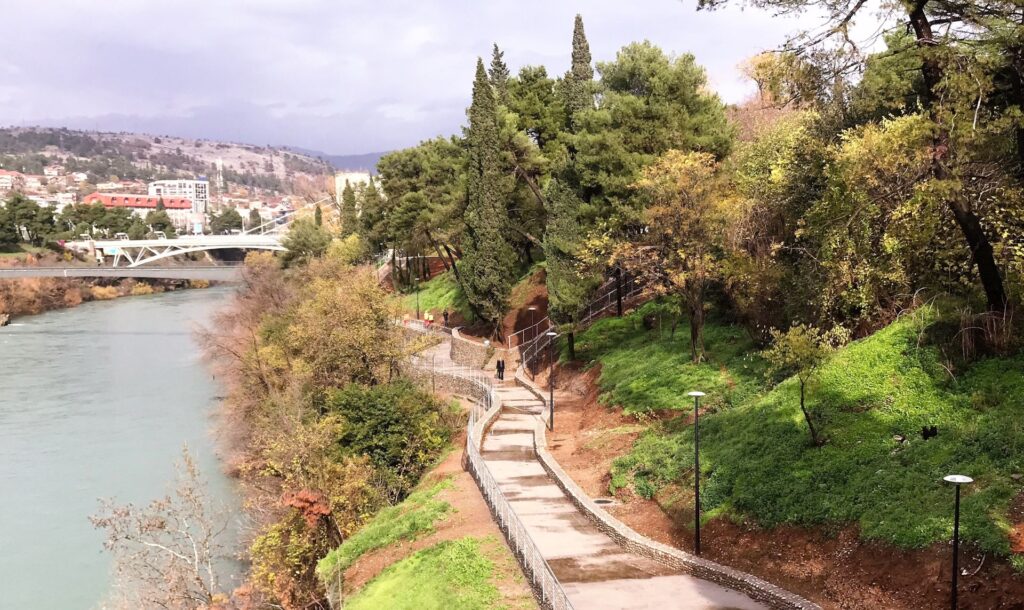
It’s true, the city center is not spectacular – although Podgorica’s night life seems to be quite popular among foreigners -, but you will get another impression if you make a walk through the parks along the Morača and Ribnica rivers. I’ll describe a picturesque route, which will also enable you to admire several cultural monuments and statues, representing famous personalities from Montenegro’s past (7 PROMINENT STATUES IN PODGORICA).
Most people will make this walk during the daytime, but I would strongly recommend to make an evening walk and enjoy the lighting of the parks, monuments and bridges. By the way, did you know that Podgorica is one of the few capital cities in Europe, where you can safely walk through the parks in the dark? Petty crimes are quite rare and sexual assaults hardly exist.
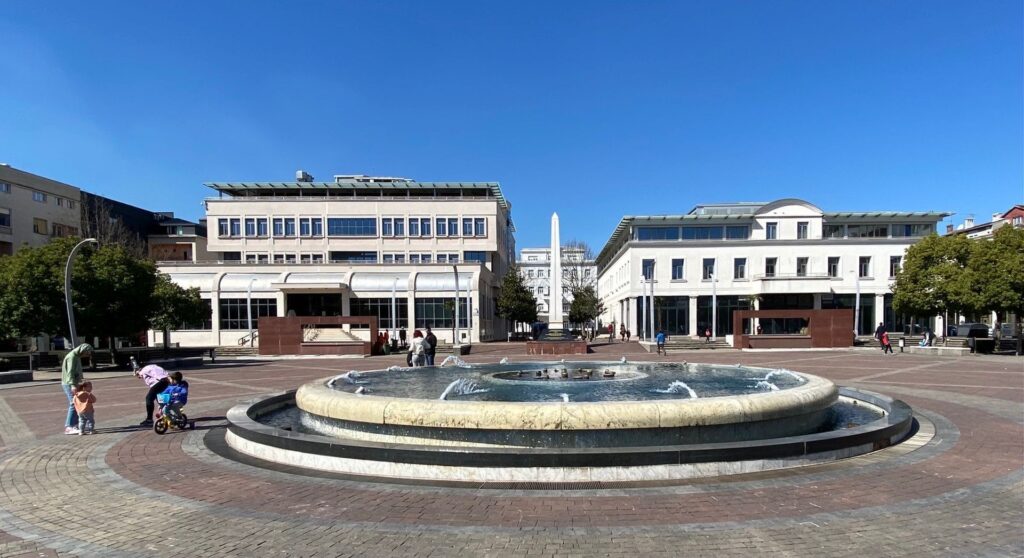
The start of this 3-3.5 km long walk is at the fountain on Independence Square in the very center of the city. With 15,000 square meters, this is also the biggest square in the country. Its form is rectangular and it is decorated with two avenues with oaks and palms.
It is interesting to know that the square changed its name several times. After World War II it was called Trg Ivana Milutinovića, after national hero Ivan Milutinović. Later it was called Republic Square (Trg republike) and its actual name is Independence Square (Trg nezavisnosti).
The complete route is given on the map below (red line).
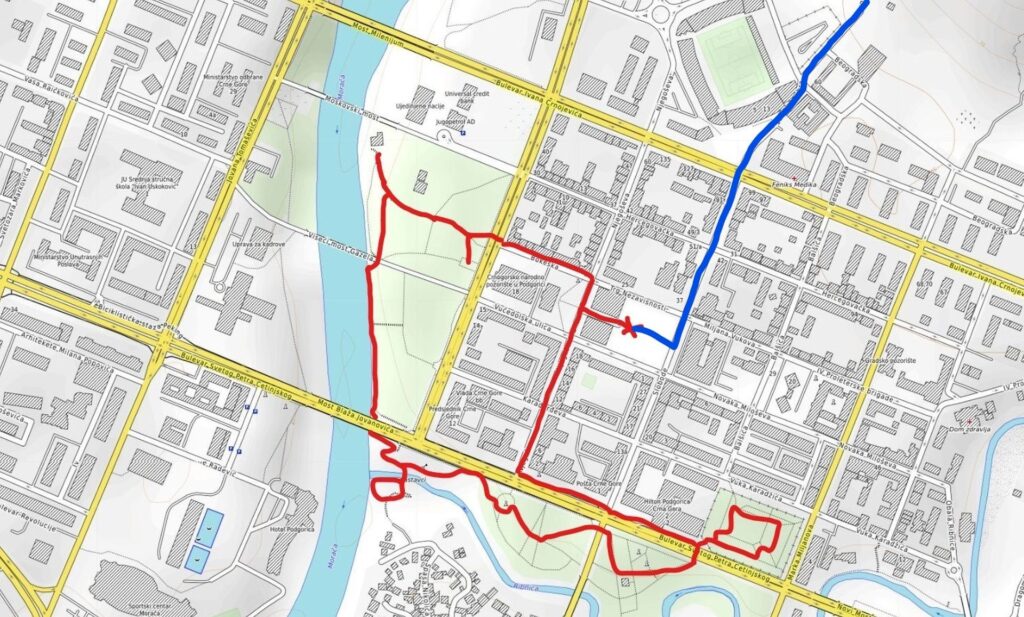
Pass in between the two buildings at the end of the square (the city library and the city administration). You will see an impressive obelisk, dedicated to Duke Mirko Petrović and Montenegrin heroes who fought in the wars against the Ottomans in the 19th century. In front of you is the Town Hall. This building was constructed between 1929 and 1931 and it is one of the few buildings that survived the bombings of Podgorica during World War II.

On the right side you see a statue of Marko Miljanov, who was born in 1833 in Medun and died in 1901. He got famous as leader of the Kuči clan, and later as a Montenegrin general and writer. Although he was illiterate like most of his countrymen, he learned to write when he was 50 years old. An interesting museum dedicated to him and his work can be found in the village of Medun.
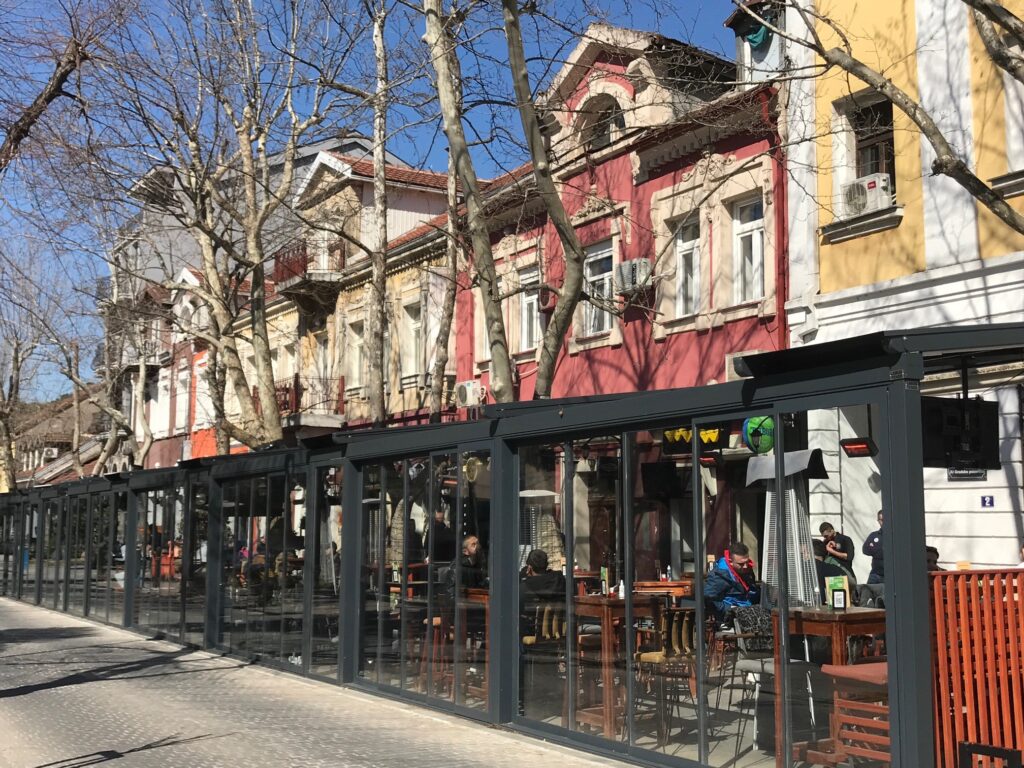
Turn left behind this monument and continue through the Bokeška Street, a lively pedestrian zone, famous for its pubs and restaurants. Many of them dispose of heated street terraces. Especially in the evening, when the city center is lit up nicely, the streets are full of people and the atmosphere is cheerful and relaxed. Believe me, Bokeška resembles one long bar that is served by various bar staff. And of course, at night, music gets loud and night life takes over….
NJEGOŠ PARK
Cross the road at the end of this street and enter the Njegoš Park, which spans both sides of the Morača river. This park is almost like a green oasis in the middle of the city. Even in the hottest summer months, you can find peace, tranquility and shade in the Njegoš Park.
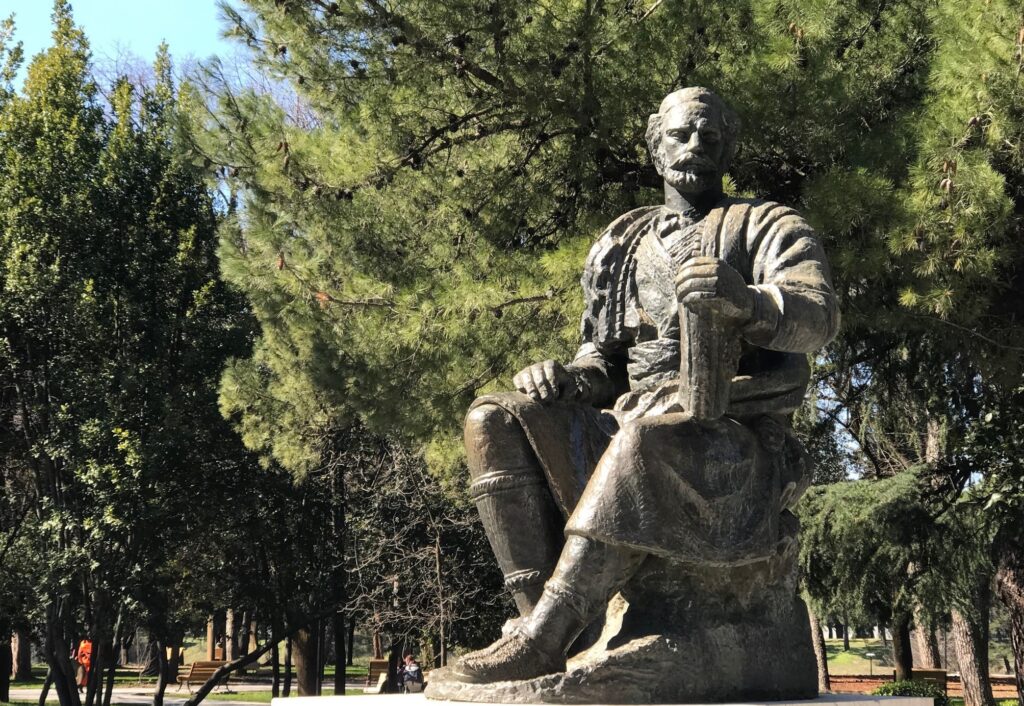
In the park, opposite to the National Theatre, is a big statue of Petar II Petrović Njegoš. This statue, a work of Sreten Stojanović, was erected in 1956. It was the first sculpture placed in post-war Podgorica. By the way, two other casts of this statue can be found in Belgrade and Rome (Villa Borghese).
Prince-bishop Njegoš was one of the most famous historic personalities of Montenegro; he was first of all known as poet and philosopher, but he was also an enlightened ruler and a great warrior.
Continue straight ahead and start exploring the new part of this park, which was recently opened for the public. It is full of walking paths, benches and lush vegetation (AND trash bins, what is quite an exception for Podgorica’s public spaces). The beautiful recently constructed promenade offers you a nice view on the Morača river and the bridges over it: the eye-catching Millennium bridge on the far right, then the Moscow pedestrian bridge, the old „Gazela“ pedestrian bridge and on the left side the Blažo Jovanović bridge that connects Nova Varoš with the new district of „Preko Morače“ (WALKING THROUGH THE PARKS OF PODGORICA I).
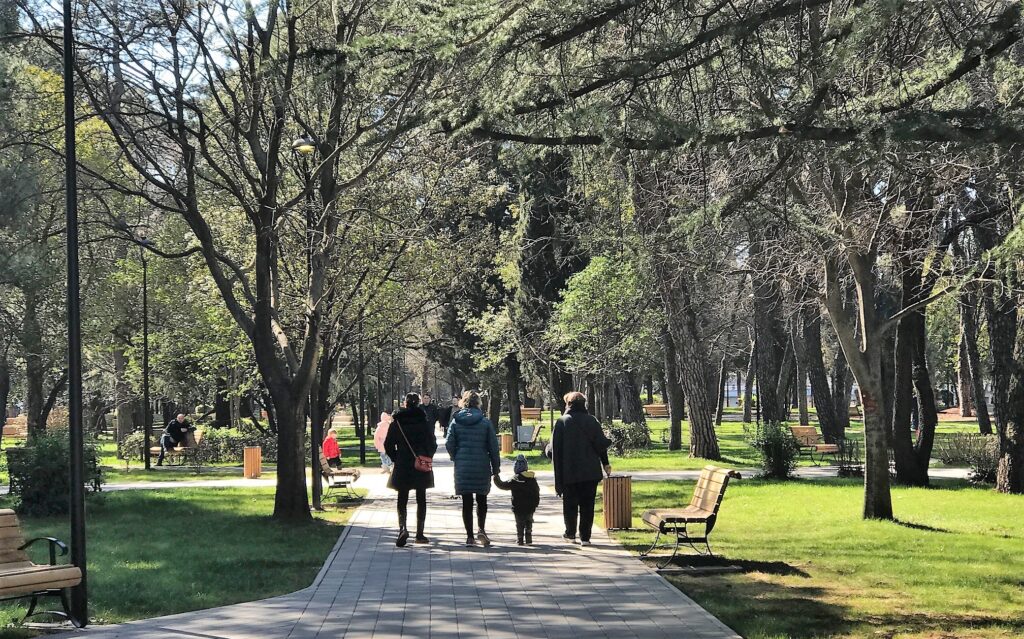
The 140 m long Millennium Bridge has become the new symbol of the city. Ironically, it was finished five years after the new millennium.
The modern bridge on the left side of the Millennium Bridge is a pedestrian bridge that was donated by the city of Moscow, with the original sculpture of a Russian musician.
And the third bridge – “Gazela” is an old pedestrian bridge, which is frequently used by the inhabitants of Podgorica.
Go down the stairs on the right side and explore the Galeb Beach. The neglected building on this beach was once – during the 80s and 90s – a popular meeting point of Podgorica’s youth. Nowadays, it is a kayak club. Are you brave enough to go for a swim in the Morača river? Don’t forget that Morača is a mountain river: even during the summer, the water temperature doesn’t exceed 18 degrees Celsius!
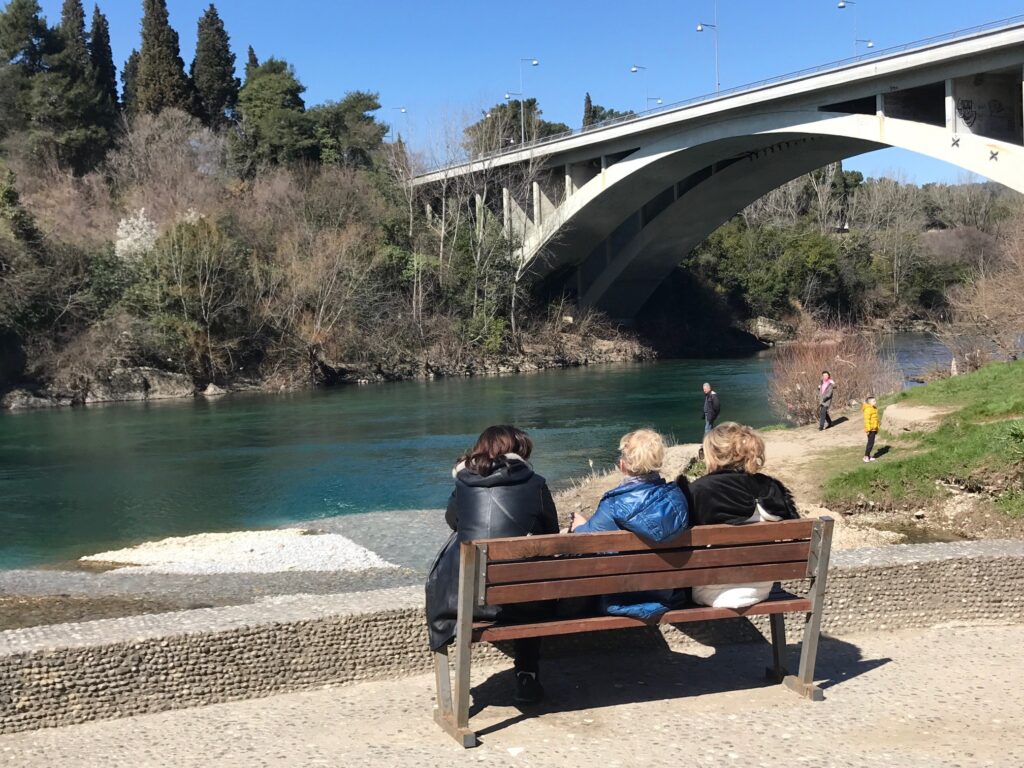
SASTAVCI
Back to the promenade you can continue your walk, enjoying the view of the Morača river. When you arrive at the main Blažo Jovanović bridge, pass underneath it and discover a wonderful part of the city: Sastavci, the confluence where the Ribnica river joins the Morača.
On the other side of the emerald-green Morača river is the Podgorica Hotel, designed by the famous female architect Kana Radović and made of pebbles and stones from the river bed, with three large terraces above the river. Unfortunately, a huge skyscraper was built at a few meters’ distance of the hotel and totally spoilt the view ….
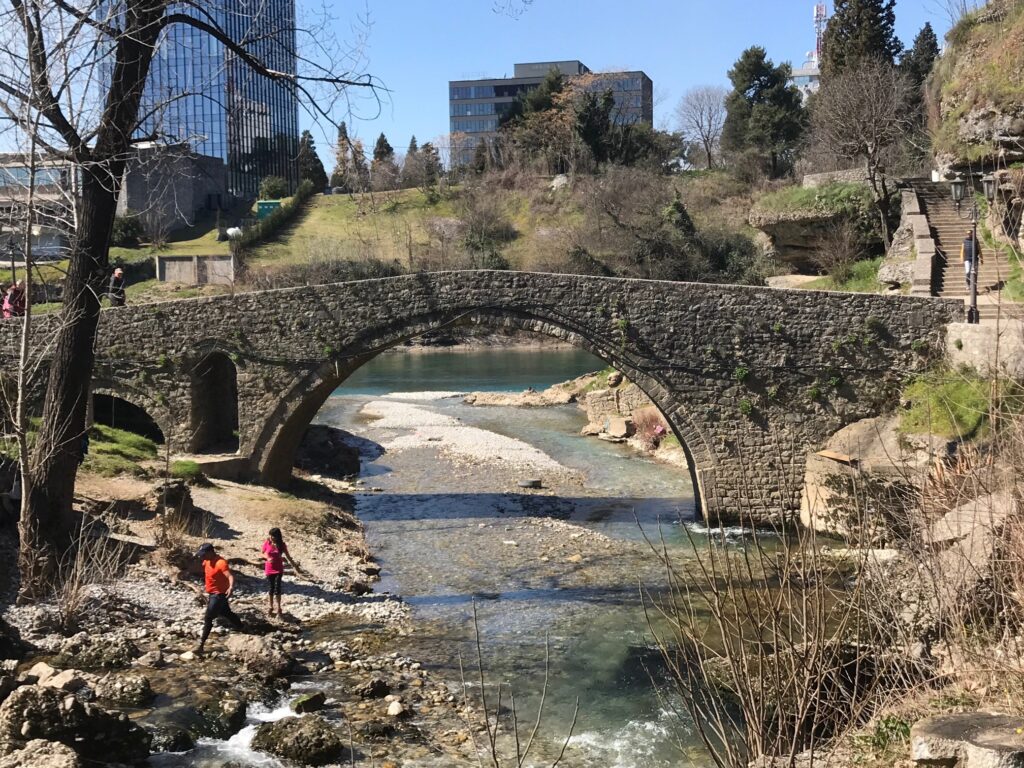
Sastavci – also called Skaline – is a nice place for relaxing. In the summer months, you can see mothers with children playing on the banks of the river, young couples enjoying the romantic atmosphere and elder men fishing. Especially interesting is the old stone bridge, which was built by the Ottomans in the 15th century. Above Sastavci, on the hill, are the remnants of the old Ribnica fortress, erected by the Ottomans in 1474.
Pass the old bridge and climb the stairs up to Boulevard Sveti Petar Cetinjski. This is the main boulevard that joins the Nova Varoš and Preko Morače district, described in my last blog post.
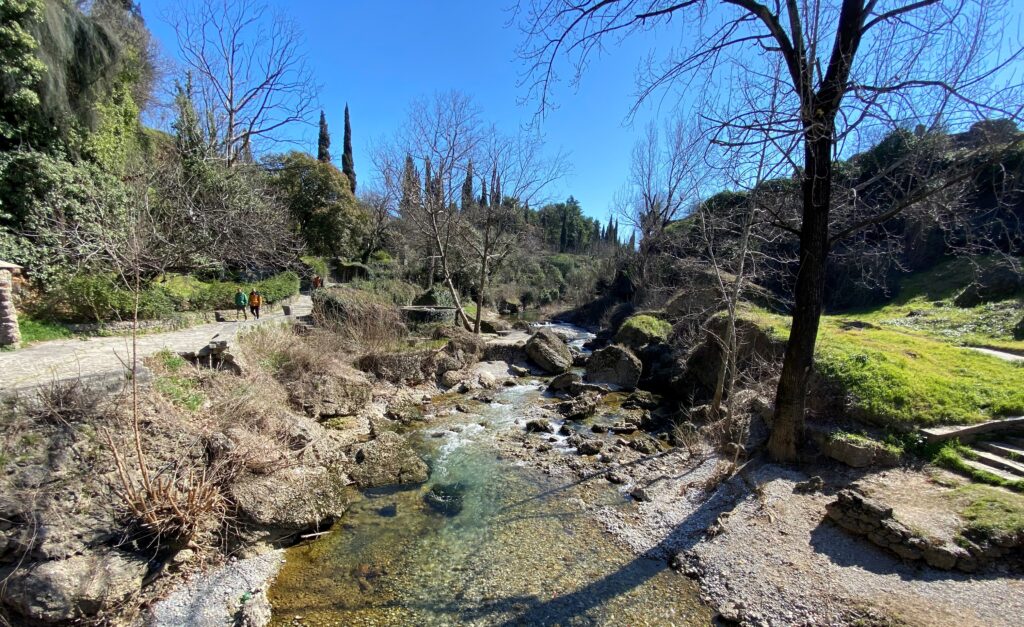
This part of the boulevard is home to a few important buildings: the Presidential building, the Parliament, the Central Bank and the main post office.
Turn right to the platform with the fairly standard equestrian monument of King Nikola I Petrović Njegoš. It is interesting to know that almost all Montenegrin towns have a statue of King Nikola, the seventh and last ruler of this Montenegrin dynasty. I think that Podgorica’s statue – erected in 2006 – is certainly not the most beautiful one… It replaced an earlier sculpture called ‘Bathing Woman’, which was removed as the public found her “fat and ugly” and not typical for a Montenegrin woman.

KING’S PARK
Continue to one of the busiest crossroads of Podgorica, in front of the Hilton Hotel. Cross the road at the end of the park and enter the fenced King’s Park. This park, renovated in 2013, was a gift of the people of Azerbaijan. Apart from nice benches, it contains a shady part with chess tables, a fountain and a children’s playground. Two statues show the Azerbajian poet and writer Husein Javid and the printer and editor Božidar Vuković Podgoričanin.
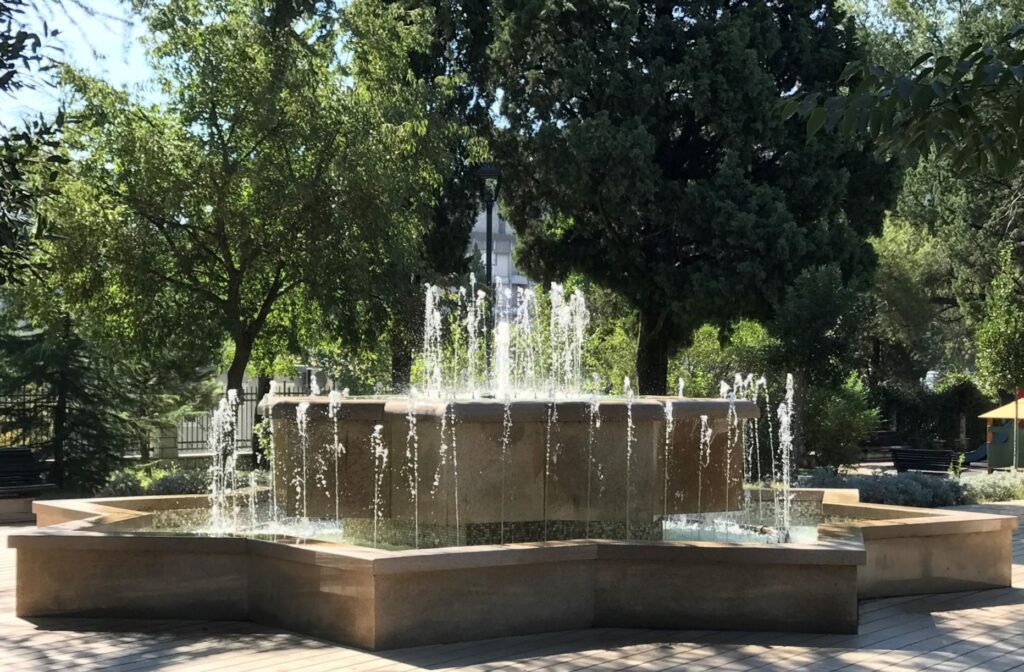
KARADJORDJEV PARK
When you leave this park, you can cross the street and visit the Karadjordjev Park, on the right side of the Hilton Hotel. This is another great place to relax after a hard day. The park was originally built in 1927 and in 1954 it was rebuilt after being seriously damaged during World War II. In the center of the park is a big statue of Karadjordje, which is the byname of Djordje Petrović (1762-1817), the founder of the Karadjordjević Dynasty from Serbia.
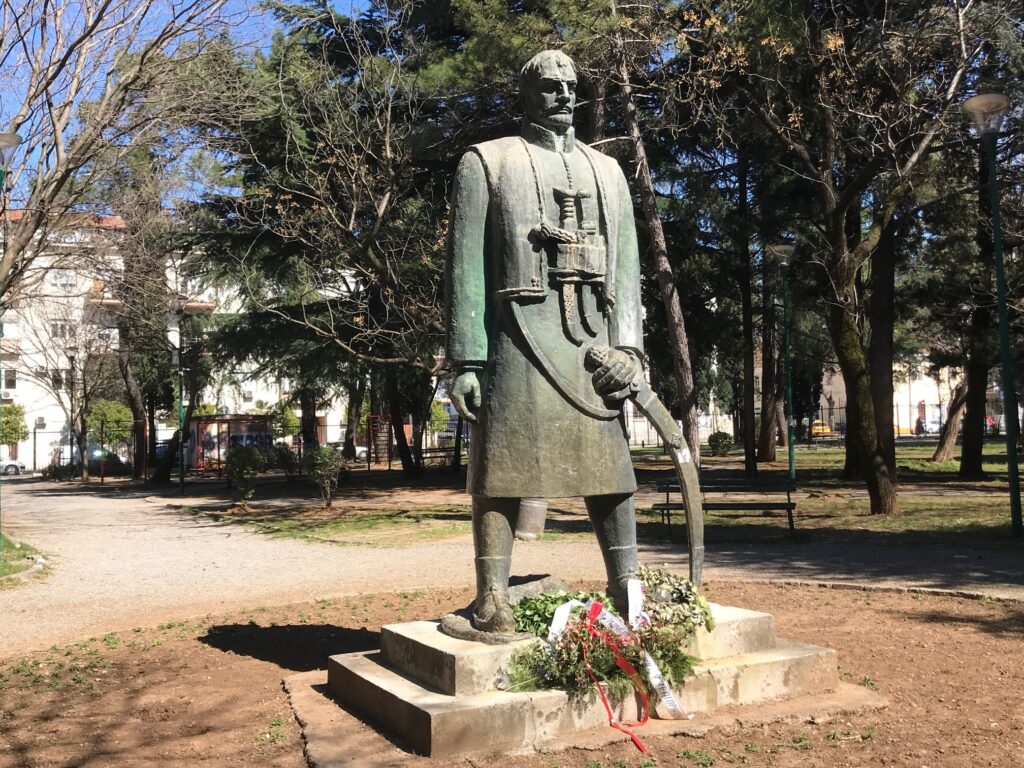
Leaving the park at the same gate, you can pass along the Hilton Hotel, cross Ulica Slobode (Freedom Street), pass the main post office and the Central Bank and continue along the Boulevard until you see the statue on the corner of Njegoševa street, which is dedicated to Alexander Pushkin and his wife. It shows the famous Russian poet Pushkin reading poetry to his wife Natalija Gonchareva. The statue, a gift from Moscow, was erected in 2002. Pushkin wrote the poem ‘Bonaparte and the Montenegrins’. The first verse sounds: ‘Montenegrins, what does it mean?’ asked Bonaparte; Is it true? – an evil tribe that doesn’t fear my power!
Turn right into Njegoševa Street, a pedestrian zone full of pubs and terraces in the open air. Turn right at the Town Hall and return to Independence Square.

FOREST PARK GORICA
Did you enjoy this walk? Starting from Independence Square, you can also make a nice walk to the most popular recreation zone of Podgorica, Forest Park Gorica (blue line on the map). Just follow Ulica Slobode to the end, pass along the right side of the city stadium and you will arrive at the entrance of the park. Climbing to the top of the Gorica hill, you will have a wonderful view of the city!
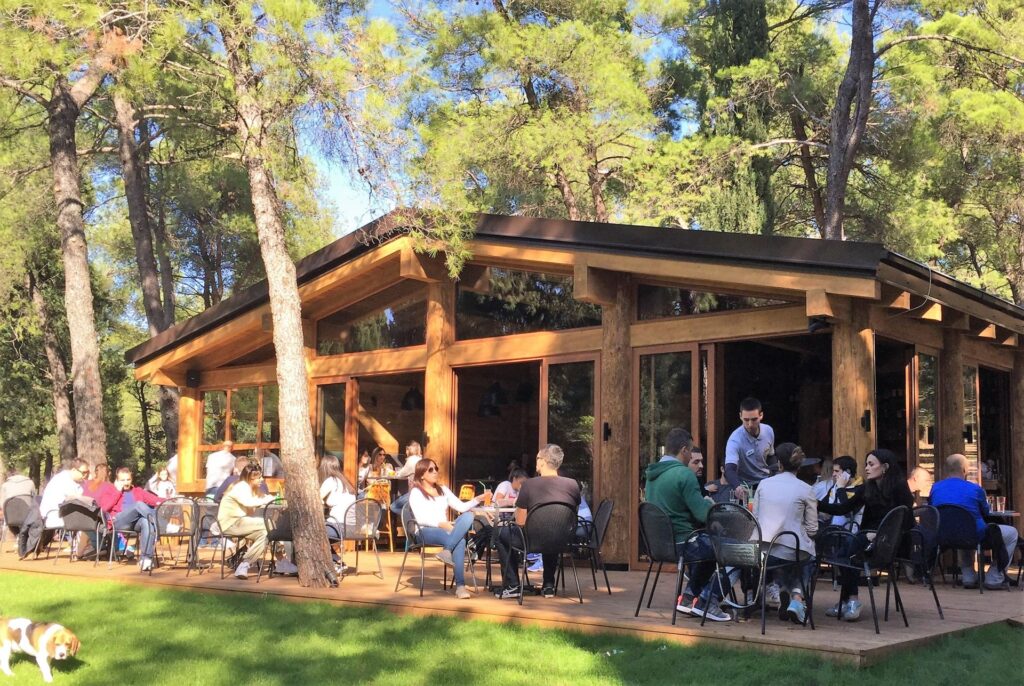
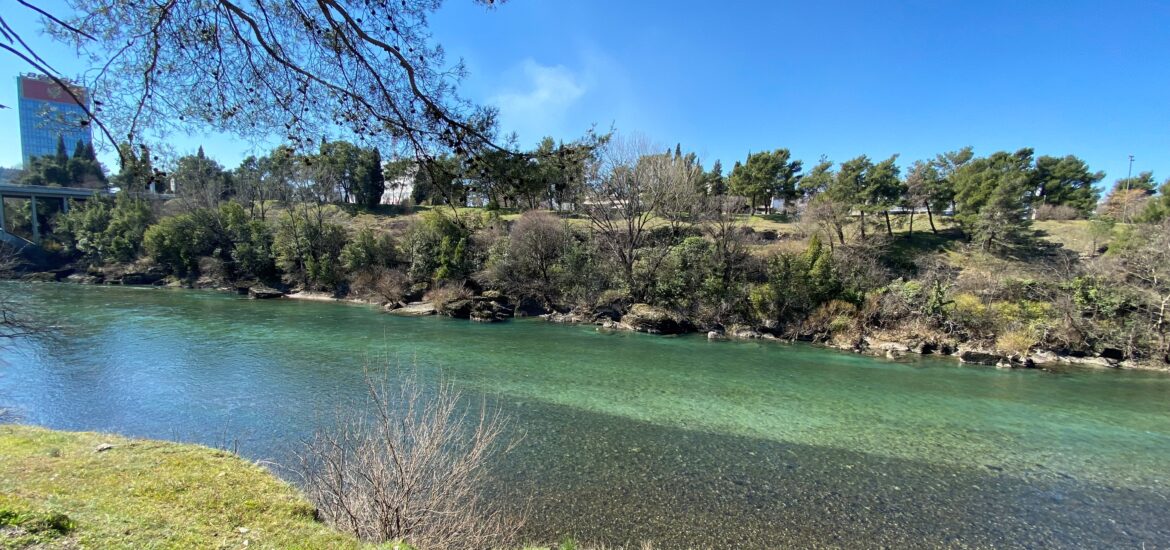
Lovely photos. Great blog. Thanks for bringing us closer to Podgorica.